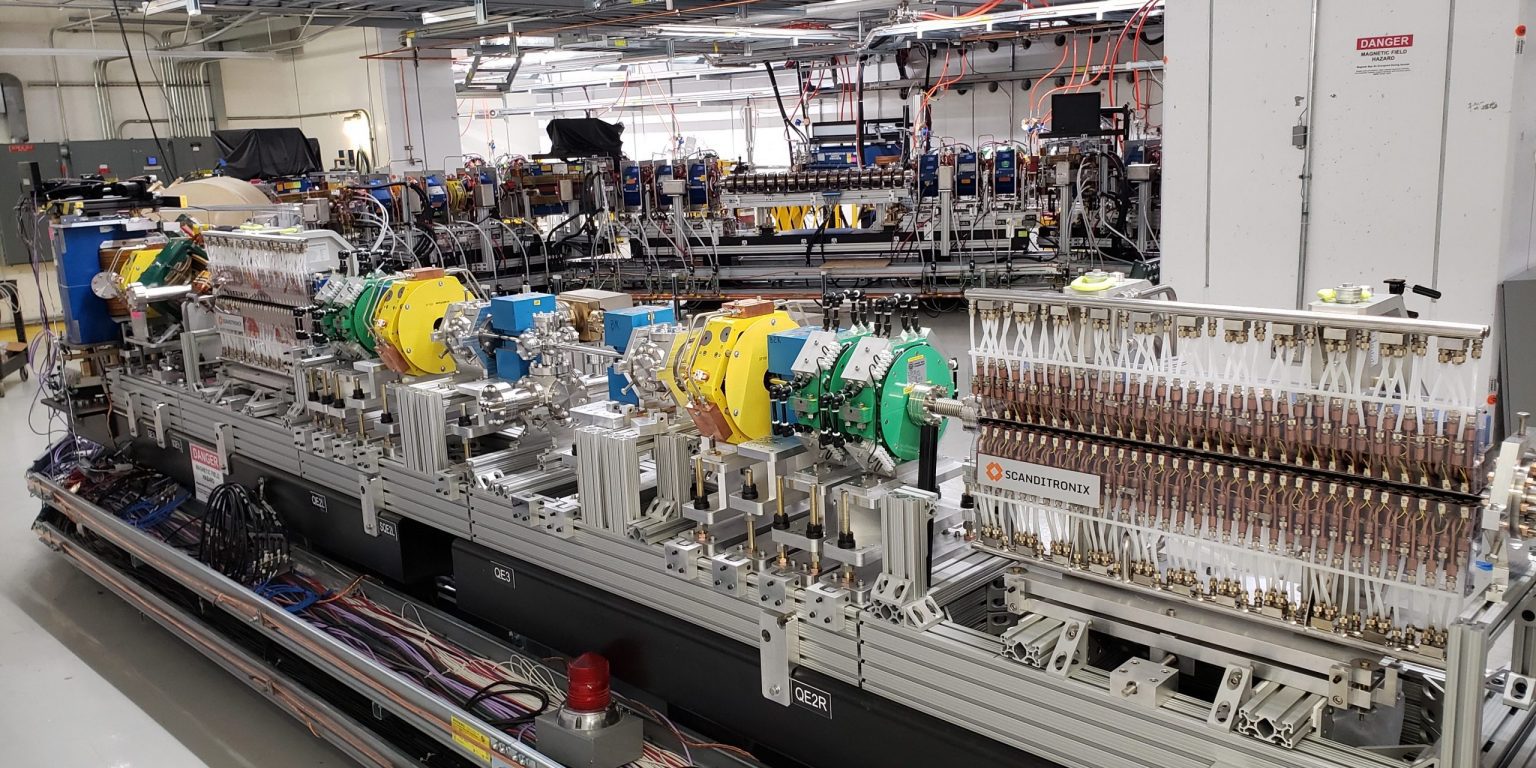Before researchers can smash together beams of particles to study high-energy particle interactions, they need to create those beams in particle accelerators. And the tighter the particles are packed in the beams, the better scientists’ chances of spotting rare physics phenomena.
Making a particle beam denser or brighter is akin to sticking an inflated balloon in the freezer. Just as reducing the random motion of the gas molecules inside the balloon causes the balloon to shrink, reducing the random motion of the particles in a beam makes the beam denser. But physicists do not have freezers for particles moving near the speed of light—so they devise other clever ways to cool down the beam.
An experiment under way at Fermilab’s Integrable Optics Test Accelerator (IOTA) seeks to be the first to demonstrate optical stochastic cooling, a new beam cooling technology that has the potential to dramatically speed up the cooling process. If successful, the technique would enable future experiments to generate brighter beams of charged particles and study previously inaccessible physics.
“There is this range of energies — about 10 to 1,000 GeV — where there currently exists no technology for cooling protons, and that’s where optical stochastic cooling could be applied at the moment,” said Fermilab scientist Alexander Valishev, the leader of the team that designed and constructed IOTA. “But if we develop it, then I’m sure there will be other applications.”
In January, IOTA’s optical stochastic cooling (OSC) experiment started taking data. IOTA is supported by the U.S. Department of Energy Office of Science.
OSC operates on the same principle as conventional stochastic cooling, a technology developed by Simon van der Meer and harnessed by Carlo Rubbia for the 1983 discovery of the W and Z bosons. Van der Meer and Rubbia won the 1984 Nobel Prize in physics for their work, which has since found use in many particle accelerators.


